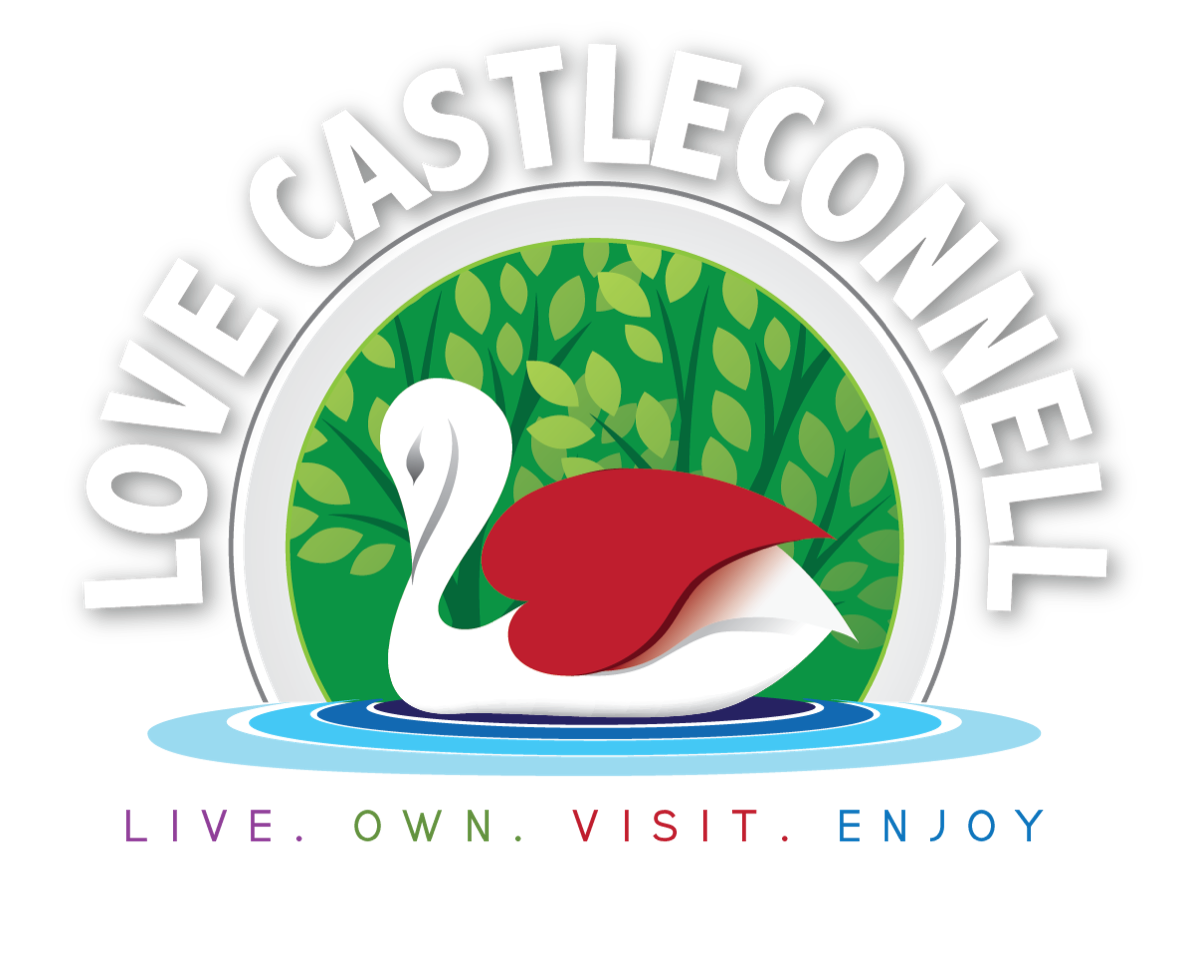Caislean Ó gConaing, got its name from the Ó gConaings who were the predominant clan or tribe in the local area, they held sway here until they were displaced by the famous O’Brien’s of Thomond. Brian Boru, for instance was one of them and then you had King Dónal Mór O’Brien, famous for erecting the Cathedral of St. Mary’s in Limerick and also the Cathedral in Killaloe, both of whom were originally Catholic, now in Protestant hands. He is also credited with the erection of the chapel on the Rock of Cashel.
The Castle in Castleconnell was not originally there in those times, although some of the residents lived around there. A nephew of Brian Boru was actually murdered in that castle, by the soldiers of King Dónal Mór of Limerick who feared he was going to succeed to the title of the King of Thomond, so he had him killed. Later times when the invaders came the O’Brien’s were displaced, then the powerful De Burcas or Burkes took over and were given title Lord of Castleconnell, by English Kings and one of them was given a grant and a title to build the castle in Castleconnell, the ruins of which are there to the present day.
This castle was in good condition until the arrival of Ginkle and the Williamite forces around 1551. They seized the castle and drove out the legitimate owners of the time. They held it for some time until they in turn were forced to depart by local Gaels and the castle was taken over by Irish forces again for a time until 1690 and the first Siege of Limerick. That year a detachment of troops were sent out from Limerick to seize the Castle but the attempt failed and they withdrew. Then in 1691 a second and a more powerful attempt was made and after fierce fighting over two days, the castle was eventually captured. It took £600 at that time to destroy the castle, which was a tremendous lot of money. It had been a very fine castle and what remains today in ruins, is just a very small portion of the original castle. It really gives no impression of what it originally looked like in its full splendour and glory.
Over the years, new townships were developed, to the north of the village we have the area called The Spa…this was originally a very famous place because there was a noted spa there, especially in the 17th C. Castleconnell was one of the first areas in the county to be planted by the English. Williamite soldiers and their descendants settled down and established themselves here. Large beautiful residences with high walls were built as Castleconnell was seen as being in a fairly firm position to defend. These families came to reside here and their sons and daughters were sent out to the Continent….The Grand Tour of the Continent, it was called and they spent some time out there and came back with wonderful lavish ideas of architecture and we can see evidence of this in some of the lovely buildings still in the area such as the Georgian residences and mansions.
At that time, the De Burcas or the Burkes were the principal family and most important employers in the area. They owned most of the territory around and they actually established the Spa. Gentry came to Castleconnell to fish and brought friends and relatives along with them as the river was famous for its salmon fishing. It was known at one time in the 17th C as the ‘Millionaire’s Playground’, because of all the wealthy visitors to the area. Later, of course, the Shannon Scheme diverted the water from Castleconnell but the fishing was still very much in evidence and fishermen came regularly from Germany, England and France.
The natives settled down under their landlords around the place. Many emigrated to places like Canada, America and Australia. Those that stayed made the best they could of it. Even though it was a heavily planted area, a tradition of Gaelicism thrived here and a large section of the community kept up the Gaelic traditions, customs and the language. There were so many Gaelic speakers here at that time that in 1870 a priest called Fr. Hennessy, who was fluent in the native tongue, from Macroom in Co. Cork was sent to Castleconnell.
Davy concluded his interview by giving his opinion on the characteristics of a typical Castleconnell man ‘Upstanding Irishman…hard man of the soil and fond of his own traditions and culture, own music and song and of course the Gaelic games, especially hurling’
Excerpt from a radio interview between Donnacha O Dulaing and local historian Davy Quaid R.I. P. in 1976.
